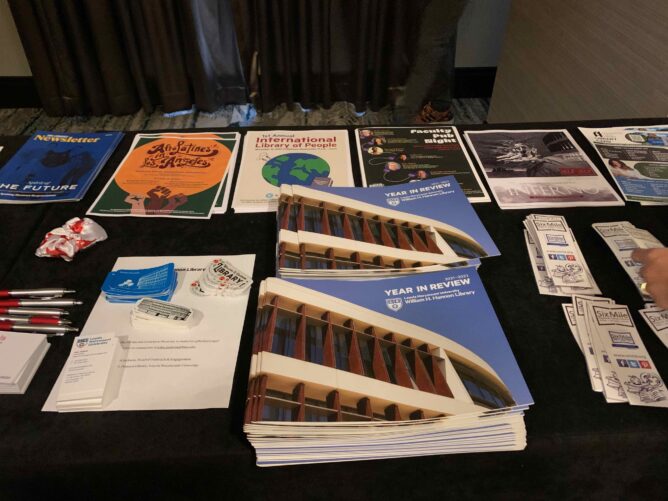I’ve been thinking about something I heard at the LMCC 2023 conference: “Marketing should drive usage which in turn creates impact” (source: Cordelia Anderson).
I often forget that middle piece when developing outreach strategies for my library. At the risk of oversimplifying, I’m extending Anderson’s use of the word “marketing” to the entire outreach enterprise. For sure, there are programs and initiatives the directly impact usage: a recent campaign to promote our streaming video collection, the curation of recommended reading lists, and the annual open house. However, there are some programs that skip right over usage to create the end-goal of impact: our storytelling programming, our faculty speaker series, and our haunted library. These latter programs directly impact our students by creating a sense of belonging and bringing together our community through the celebration of its creative works, but that impact isn’t achieved via the library’s services and collections.
I would consider creating impact via the library’s services and collections to be a traditional approach to library outreach, one often taken by teams where outreach work is embedded within reference and instruction departments. This is where you find info lit workshops, custom bibliographies, instructional handouts, e-resources campaigns, video tutorials, etc. For teams like the one I manage (we are our own “outreach and engagement” department separate from our colleagues who focus on teaching and collections building) we go straight to the impact: feel good events, mental health programs, community building, productivity support, and service learning opportunities. The motivations for our work come unfiltered straight from either the library’s broader mission or the university’s strategic goals.
I’m not suggesting one type of outreach is better than the other. Having both is important, but finding the optimal balance between the two is a conversation for every individual, team, library, and organization to determine on their own terms.
